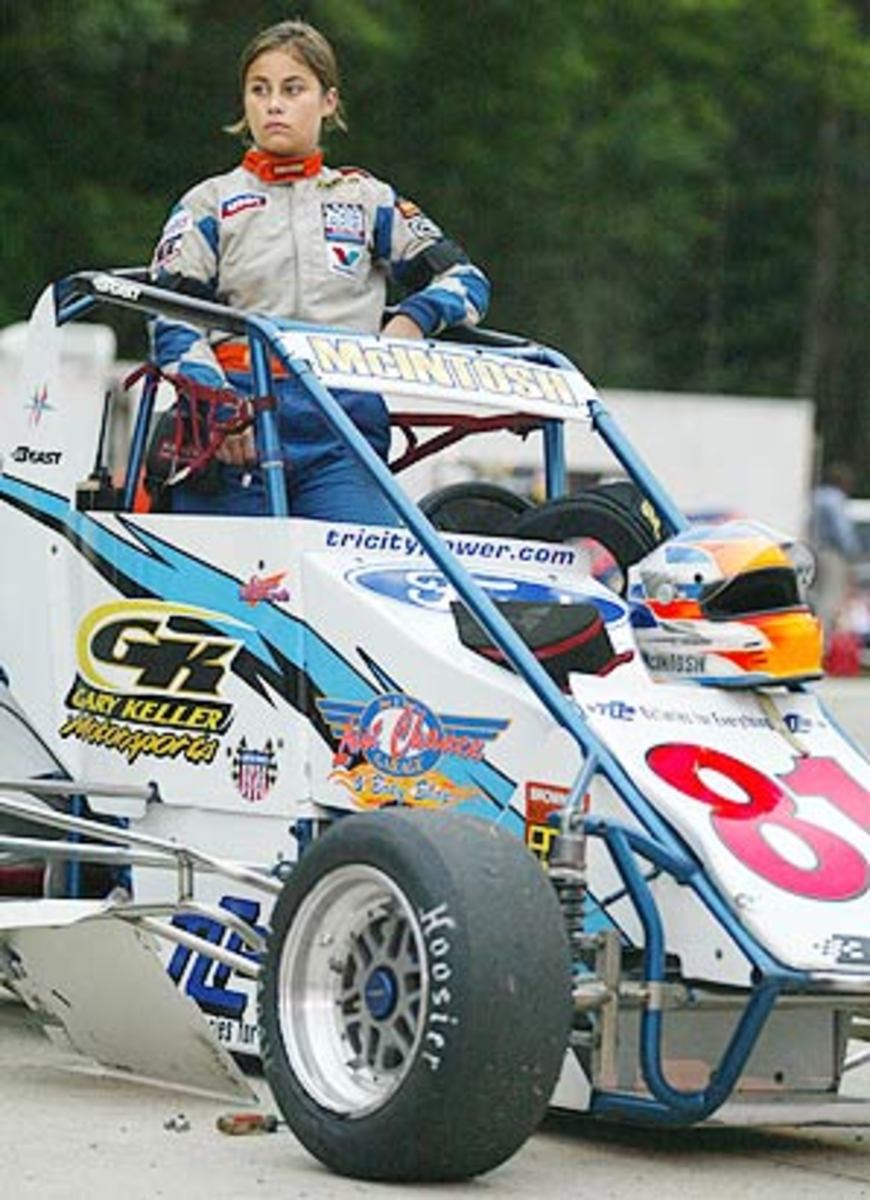
Can Shannon McIntosh fill the void left by Danica Patrick?
Danica Patrick's departure from the Izod IndyCar Series after seven seasons will leave a vacuum in open-wheel racing.
With marketing strategies and consumer attention spans requiring the next-this or next-that to be seized upon quickly, IndyCar and Izod will be pressed to find some semblance of a replacement. That would be difficult under any circumstances, given Patrick's ascension to mainstream powerhouse as a brand as much as a race car driver. That she is one of precious few Americans and the only American female currently racing in a series attempting to win back domestic market share makes her even more difficult to replicate.
Her replacement might be already in IndyCar, just outside the vortex. At 22, Shannon McIntosh is about to complete her first season in the USF2000 series. She's currently the only American female in IndyCar's sanctioned developmental pipeline. With her combination of talent, attractiveness and marketability, she might be able to fill Patrick's vacated perch. Maybe. All of that figures to be years, laps and ad campaigns away. Being a finalist for the October cover of Seventeen magazine is a good start.
For McIntosh, the template of the modern female race car driver Patrick will leave behind will be of great benefit.
"It kind of is an advantage for me to see what she has done, to kind of be able to get an idea of what I do and don't want to do," said McIntosh, who is eighth in USF2000 driver points with two races remaining in her first open-wheel season. "Obviously, there's been a lot of scrutiny based off her FHM magazine [photo shoot] and all that stuff. And for me, it's a very fine line between embracing being a woman and being sexy and all of that stuff, but also ... being taken seriously as a race car driver.
"For me, I think what I am determined to do is to not get my big break from taking off some clothing. ... For me, she's really set a template as far as showing that marketing works, but for me, I don't think I see myself marketing myself in the same way."
But that doesn't diminish Patrick as a driver, McIntosh said. The management of image and racing was one of the more impressive and useful lessons Patrick left for McIntosh, she said, although they have never met.
"I think this year I have gained so much more respect for her, because this is the first year I have really worked with a team and been alongside IndyCar and Grand Am, when USF2000 has raced with those guys at a lot of races," she said. "I think what I have learned from her, or at least kind of seen, is that it's a huge juggle to basically keep up with the whole branding and marketing and the fans and keep this happy face when you get out of the race car after a bad session. People want to talk to you and you have engineering stuff to do. What I have a lot of respect for is she's gotten a lot of scrutiny, but I think it's because there's been a lot more attention on her.
"I think a male driver who is pissed after a race and doesn't want to talk to fans is probably going to be accepted a lot more than she has because of all the eye balls on her. She's obviously a race car driver and wants to win."
McIntosh, who unsuccessfully pursued a NASCAR career while studying at UNC-Charlotte three years ago, said she doesn't think Patrick's change of regimens will impact the amount of females racing in open-wheel. IndyCar currently has three females racing full time in its top series and four women competed in the Indianapolis 500 this season. All of them -- Patrick (Illinois), Ana Beatriz (Brazil), Simona de Silvestro (Switzerland) and Pippa Mann (England) -- are from areas where open-wheel racing is the traditionally the most popular form of motor sports. McIntosh said many females aspire to NASCAR careers -- Johanna Long currently notable among them -- but none has ever managed a full season. Janet Guthrie's 19 races in 1977 were the most for a female in a single Sprint Cup season.
IndyCar's female drivers have come to deal with questions about their gender and vocation in juxtaposition to Patrick. That, Mann said, does not have to be taken as a slight.
"Somebody might still go up to [three-time champion] Dario [Franchitti] and ask him what it's like to be a Scottish IndyCar driver," Mann said. "And that's uniquely something of Dario and not something he can change or would want to change. I think what is nice about the general line [with] female drivers is the line of questioning is along the lines of that. ... You're a spokesperson."
McIntosh knows that if she eventually reaches IndyCar -- she does not yet have a deal to race next season -- that she will be cast as Patrick's replacement in part because of her nationality. She understands it. But she plans to try to manipulate it to her advantage.
"Who wants another of the same thing again?" she asked. "My thing is, I have to be myself and I have to show them that I am not another Danica; I'm the first Shannon McIntosh. I don't necessarily know how you can get ready for it, but I know I'll take it with open arms because, ultimately, if it goes that way, it will help fuel my career."





